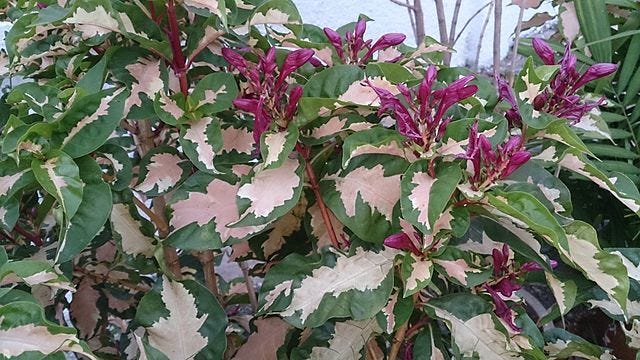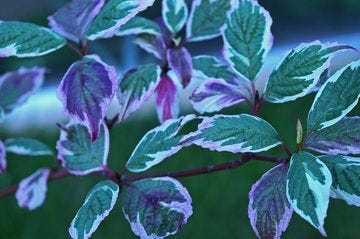Variegated Plants in Garden Design
Variegated plants are a great way to improve the visual appearance of your garden.

Variegation is a term that describes plants whose leaves have a mixture of color: generally this is seen as green with lighter green, yellow or white markings. Often these plants will have the cultivar name 'Variegata' appended to its botanical name.
Variegated plants rarely occur in nature and are normally a selected cultivar of a plant with a specific mutation that causes the discoloration. As a result, variegated plants cannot be typically raised from seed.Variegated plants can be less vigorous than their non-variegated counterparts due to lower chlorophyll in the light colored parts of the leaves and can be more prone to insect infestations due to the weaker tissue. The other problem is that they can often try to revert to their fully green form. Normally this happens on a single stem, so prune this off as soon as you see it to prevent the change in color, as it may soon take over the entire plant.
If you have an area of your garden that is dominated by green foliage, try placing a variegated plant in the foreground to create some drama. Another advantage to variegated plants is that the lighter colored segments of the plant's foliage can reflect moonlight to make your garden more visible at night without any lighting.
While variegated plants can look striking in a nursery, be thoughtful in your placement in the garden. Too many variegated plants can create a very busy effect. Using them sparingly with a balance of solid green foliage is generally the best combination. The exception is in shady areas, you may find that more liberal use of variegated plants can really cheer up a gloomy spot in your garden. When working on shady areas, variegated plants can really help add some color to otherwise murky spots. Variegated flax Lily (Dianella tasmanica) or Turf Lily (Liriope muscari) are two of my favorites for brightening up an area of dry shade.





